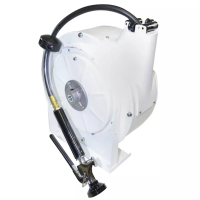Instruction Manual
D102005X012
846 Transducer
June 2017
14
Output Pressure
Connect the output signal line to the transducer at the output port. The output port is 1/4‐18 NPT, as shown in figure
4. The output gauge port can be used as an alternate signal port. If the gauge port is used as a signal port, a threaded
plug must be installed in the output port.
The output gauge port allows connection of an output gauge to provide local output signal indication. The output
gauge port is 1/4‐18 NPT. If an output gauge is not specified, a threaded plug is shipped with the transducer. The plug
must be installed in the output gauge port when the port is not used.
Electrical Connections
WARNING
Personal injury or property damage could result from fire or explosion. In explosive atmospheres, remove power and shut
off the air supply to the I/P unit before attempting to remove the terminal compartment cover or module cover. Failure to
do so could result in an electrical spark or explosion.
Personal injury or property damage could result from an uncontrolled process. Perform the steps in the WARNING at the
beginning of the Installation section before removing the module cover to ensure the process is properly controlled.
Unscrewing the module cover removes power from the electronics and opens the supply and output air passages to
atmosphere resulting in an output signal of 0.0 psi.
CAUTION
Excessive current can damage the transducer. Do not connect an input current of more than 100 mA to the transducer.
Note
For North American explosion‐proof applications, 846 transducers have been designed so that a conduit seal is not required. For all
other applications install the product per local, regional, or national code, rules, and regulations.
WARNING
Select wiring and/or cable glands that are rated for the environment of use (such as hazardous location, ingress protection,
and temperature). Failure to use properly rated wiring and/or cable glands can result in personal injury or property damage
from fire or explosion.
Signal wiring is brought to the terminal compartment through a 1/2‐14 NPT housing conduit connection, shown in
figure 4. Where condensate is common, use a conduit drip leg to help reduce liquid buildup in the terminal
compartment and avoid shorting of the input signal. Electrical connections are made at the terminal block. Internal
and external grounding lugs are provided to facilitate a separate ground when required. The internal ground is shown
in figure 4, and the external grounding lug is shown in figure 8.

